Method for preparing efficiently synthetic sitafloxacin intermediate (7S)-5-azaspiro[2.4]heptane-7-yl tert-butyl carbamate
Lai , et al.
U.S. patent number 10,358,417 [Application Number 16/062,846] was granted by the patent office on 2019-07-23 for method for preparing efficiently synthetic sitafloxacin intermediate (7s)-5-azaspiro[2.4]heptane-7-yl tert-butyl carbamate. This patent grant is currently assigned to Chen-Stone (Guangzhou) Co., Ltd.. The grantee listed for this patent is Chen-Stone (Guangzhou) Co., Ltd.. Invention is credited to Yingjie Lai, Fengrui Lang, Xiangtian Long, Dabing Ye.
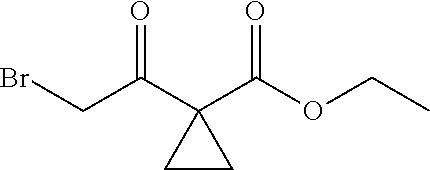
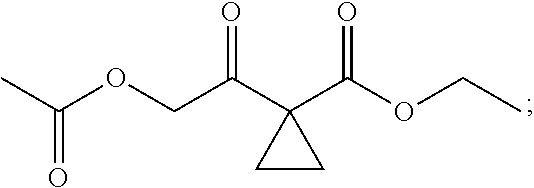


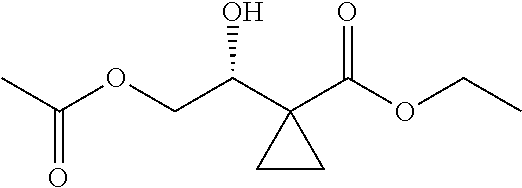
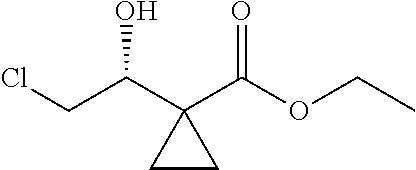
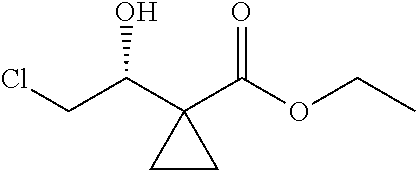
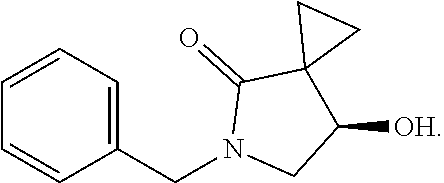
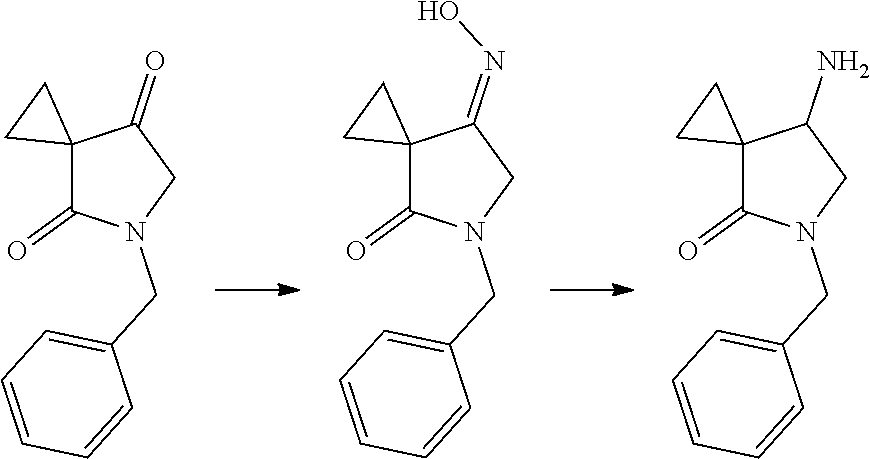
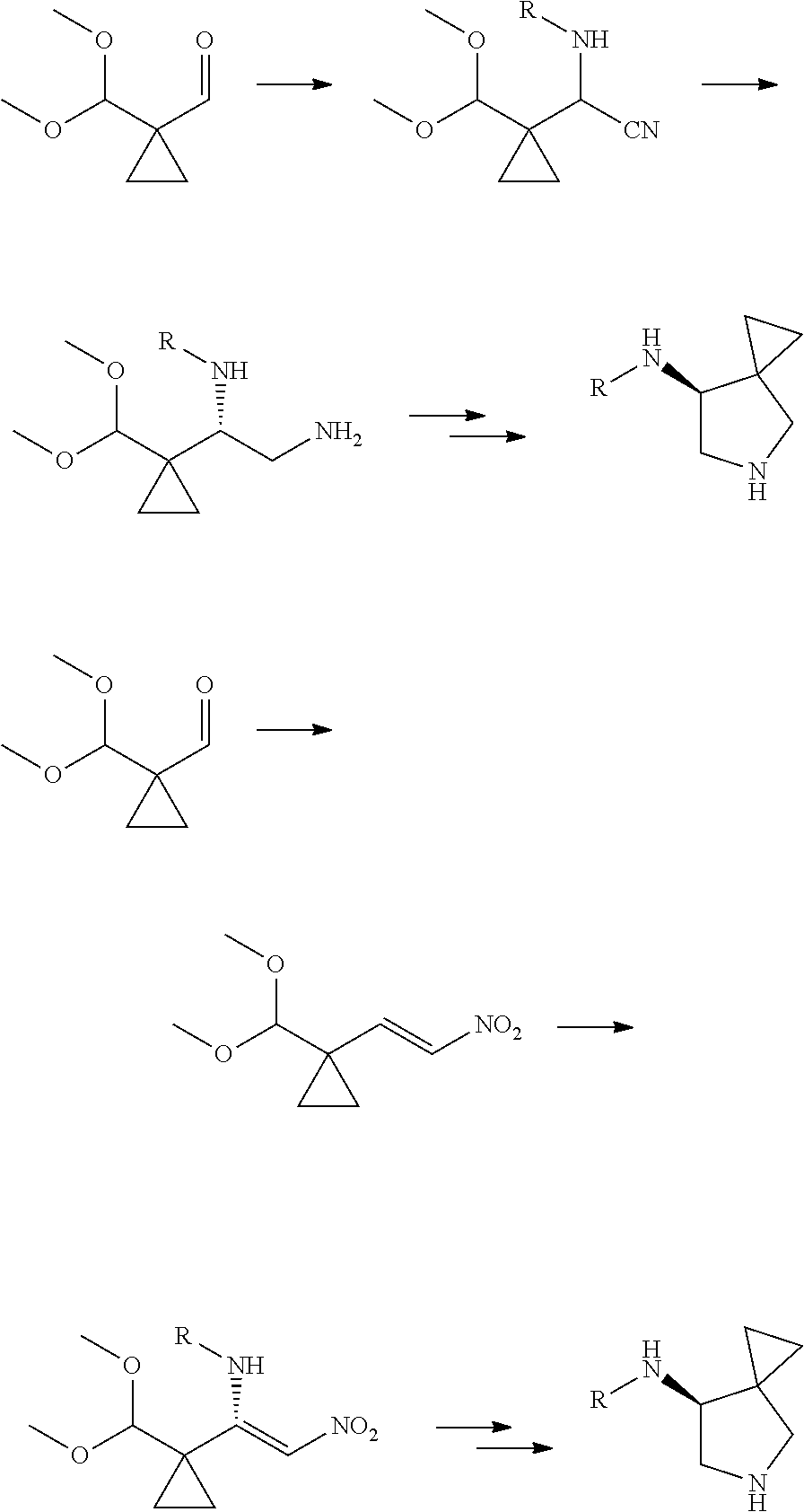


View All Diagrams
| United States Patent | 10,358,417 |
| Lai , et al. | July 23, 2019 |
Method for preparing efficiently synthetic sitafloxacin intermediate (7S)-5-azaspiro[2.4]heptane-7-yl tert-butyl carbamate
Abstract
The present invention discloses a preparation method for efficient synthesis of sitafloxacin intermediate (7S)-5-azaspiro[2.4]heptane-7-yl-tert-butyl carbamate, comprising the following steps: reacting ##STR00001## to obtain ##STR00002## reacting ##STR00003## to obtain ##STR00004## reacting ##STR00005## to obtain ##STR00006## and reacting ##STR00007## to obtain ##STR00008## In the present invention, a single compound with a relatively high ee value can be obtained, the unnecessary waste of materials is avoided, the yield is significantly improved, the operation is simple, the industrial scale-up is easy, and the production cost is reduced.
| Inventors: | Lai; Yingjie (Guangdong, CN), Ye; Dabing (Guangdong, CN), Lang; Fengrui (Guangdong, CN), Long; Xiangtian (Guangdong, CN) | ||||||||||
|---|---|---|---|---|---|---|---|---|---|---|---|
| Applicant: |
|
||||||||||
| Assignee: | Chen-Stone (Guangzhou) Co.,
Ltd. (Guangdong, CN) |
||||||||||
| Family ID: | 56747863 | ||||||||||
| Appl. No.: | 16/062,846 | ||||||||||
| Filed: | April 25, 2017 | ||||||||||
| PCT Filed: | April 25, 2017 | ||||||||||
| PCT No.: | PCT/CN2017/081893 | ||||||||||
| 371(c)(1),(2),(4) Date: | June 15, 2018 | ||||||||||
| PCT Pub. No.: | WO2017/190609 | ||||||||||
| PCT Pub. Date: | November 09, 2017 |
Prior Publication Data
| Document Identifier | Publication Date | |
|---|---|---|
| US 20180370914 A1 | Dec 27, 2018 | |
Foreign Application Priority Data
| May 6, 2016 [CN] | 2016 1 0301567 | |||
| Current U.S. Class: | 1/1 |
| Current CPC Class: | C07D 209/54 (20130101); Y02P 20/55 (20151101) |
| Current International Class: | C07D 209/54 (20060101) |
| 101759629 | Jan 2012 | CN | |||
| 104557871 | Apr 2015 | CN | |||
| 103360310 | Mar 2016 | CN | |||
| 104230790 | Jun 2016 | CN | |||
| 105906545 | Aug 2016 | CN | |||
| 104803857 | Mar 2017 | CN | |||
| H08157454 | Jun 1996 | JP | |||
Other References
|
International Search Report from PCT/CN2017/081893 dated Jul. 3, 2017. cited by applicant. |
Primary Examiner: Saeed; Kamal A
Attorney, Agent or Firm: Warner Norcross + Judd LLP
Claims
What is claimed is:
1. A method of preparing for efficient synthesis of sitafloxacin intermediate (7S)-5-azaspiro[2.4]heptane-7-yl-tert-butyl carbamate, comprising the following steps: 1) reacting ##STR00040## with acetic acid and potassium acetate to obtain ##STR00041## 2) subjecting ##STR00042## to Noyori hydrogenation reaction to obtain ##STR00043## 3) reacting ##STR00044## with a solution of hydrochloric acid in ethanol to obtain ##STR00045## 4) in the presence of cesium carbonate, subjecting ##STR00046## and benzylamine to cyclization reaction in a solvent to obtain ##STR00047##
2. The method of preparing for efficient synthesis of sitafloxacin intermediate (7S)-5-azaspiro[2.4]heptane-7-yl-tert-butyl carbamate according to claim 1, wherein ##STR00048## is obtained through the following steps: {circle around (1)} in the presence of a alkali, reacting ##STR00049## with 1,2-dibromoethane in an organic solvent to obtain ##STR00050## {circle around (2)} subjecting ##STR00051## and Br.sub.2 to substitution reaction in an organic solvent to obtain ##STR00052##
3. The method of preparing for efficient synthesis of sitafloxacin intermediate (7S)-5-azaspiro[2.4]heptane-7-yl-tert-butyl carbamate according to claim 1, further comprising the following steps: 5) in the presence of DEAD and trialkylphosphine and/or triarylphosphine, reacting ##STR00053## with DPPA to obtain ##STR00054## 6) reducing the azide group of ##STR00055## to primary amine to obtain ##STR00056## 7) grafting the primary amine of ##STR00057## with BOC protecting group to obtain ##STR00058## 8) reducing ##STR00059## to obtain ##STR00060##
4. The method of preparing for efficient synthesis of sitafloxacin intermediate (7S)-5-azaspiro[2.4]heptane-7-yl-tert-butyl carbamate according to claim 1, wherein in step 1), the usage ratio of ##STR00061## to acetic acid and potassium acetate is 1 g:(3-5) mL:(1.25-1.5) g.
5. The method of preparing for efficient synthesis of sitafloxacin intermediate (7S)-5-azaspiro[2.4]heptane-7-yl-tert-butyl carbamate according to claim 1, wherein in step 2), the catalyst used for the Noyori hydrogenation reaction is Ru-BINAP.
6. The method of preparing for efficient synthesis of sitafloxacin intermediate (7S)-5-azaspiro[2.4]heptane-7-yl-tert-butyl carbamate according to claim 1, wherein in step 3), the mass ratio of ##STR00062## to the HCl in the solution of hydrochloric acid in ethanol is 1:(3.5-4).
7. The method of preparing for efficient synthesis of sitafloxacin intermediate (7S)-5-azaspiro[2.4]heptane-7-yl-tert-butyl carbamate according to claim 1, wherein in step 4), the mass ratio of ##STR00063## to benzylamine is 1:(0.15-0.2).
8. The method of preparing for efficient synthesis of sitafloxacin intermediate (7S)-5-azaspiro[2.4]heptane-7-yl-tert-butyl carbamate according to claim 3, wherein in step 5), the usage ratio of ##STR00064## to DPPA is 1:(1.5-2).
9. The method of preparing for efficient synthesis of sitafloxacin intermediate (7S)-5-azaspiro[2.4]heptane-7-yl-tert-butyl carbamate according to claim 3, wherein in step 6), the reducing agent used for the reduction is sodium borohydride or lithium aluminum hydride.
10. The method of preparing for efficient synthesis of sitafloxacin intermediate (7S)-5-azaspiro[2.4]heptane-7-yl-tert-butyl carbamate according to claim 3, wherein in step 8), the reducing agent used for the reduction is Pd/C.
Description
FIELD OF THE INVENTION
The present invention relates to a preparation method for efficient synthesis of sitafloxacin intermediate (7S)-5-azaspiro[2.4]heptane-7-yl-tert-butyl carbamate.
BACKGROUND OF THE INVENTION
Sitafloxacin hydrate has the chemical name of 7-[(7S)-7-amino-5-azaspiro[2.4]hept-5-yl]-8-chloro-6-fluoro-1-[(1R,2S)-ci- s-2-fluorocyclopropyl]-1,4-dihydro-4-oxo-3-quinoline carboxylic acid, which is a broad-spectrum quinolones antibacterial agent developed by Daiichi Sankyo and the monohydrate thereof is used clinically for the treatment of severe refractory infectious diseases. This product can be developed for oral administration or injection administration. The oral quinolones drug Gracevit (sitafloxacin) (I) has come into the market of Japan, which is the first market on the world. The compensation price is set at 228 yen (US $2.17) per 50 mg tablet and the price of one pack of 10 fine granules is set at 576 yen.
This product has good pharmacokinetic properties, and can alleviate adverse physiological response, the antibacterial activity in vitro of which is significantly improved compared to most similar drugs. This product not only has significantly enhanced antibacterial activities against Gram-positive bacteria, but also has antibacterial activities against many clinically isolated strains resistant to fluoroquinolones. The study on the antibacterial activities of this product in vitro proves that this product has broad-spectrum antibacterial activities, i.e. it not only has antibacterial activities against Gram-negative bacteria, but also has strong antibacterial activities against Gram-positive bacteria (methicillin-resistant staphylococcus aureus and methicillin-resistant staphylococcus epidermidis), anaerobic bacteria (including Bacteroides fragilis) and mycoplasma, chlamydia, etc., in addition, this product has good bactericidal effect on many clinically common fluoroquinolones-resistant strains. This product is well absorbed orally, has a bioavailability of more than 70%, and can be distributed to extensive tissues, wherein the drug concentrations in various tissues outside the central nervous system are higher than the drug concentration in serum. Therefore, this product is expected to become an important drug for the treatment of single or mixed bacterial infections in respiratory tract, urogenital tract, abdominal cavity as well as skin soft tissues, etc.
(7S)-5-azaspiro[2.4]heptane-7-yl-tert-butyl carbamate is an important intermediate of sitafloxacin, whose disadvantages are that the synthetic route is long and difficult to be resolved, etc., resulting in limited market capacity, and high price.
At present, there are several methods for synthesizing (7S)-5-azaspiro[2.4]heptane-7-yl-tert-butyl carbamate:
The first method comprises the steps of synthesizing racemates and then resolving them to give one compound with single-configuration. This method results in the waste of the other chiral compound.
##STR00009##
In the second method, dangerous chemicals such as cyanides or nitromethane are used, which poses a great safety risk in production and is inconvenient for scale-up production (CN101544581A).
##STR00010##
In the third method, a catalyst is used for reducing to directly obtain chiral amines, however, the reduction efficiency is still not high, and the ee value is only 53% (JP2004099609A).
##STR00011##
In the fourth method, a beer yeast is used for reducing so as to obtain the chiral alcohols, and then Mitsunobu reaction is performed to obtain the chiral amines. This method has low reduction efficiency in volume and is difficult for scale-up production (Chem. Pharm. Bull. 1998, 46, 587).
##STR00012## The disadvantages of these methods are that it is difficult for scale-up production, resulting in that there is a very few manufacturers for producing (7S)-5-azaspiro[2.4]heptane-7-yl-tert-butyl carbamate, and the price is very high, which seriously hinder the further application and development thereof in organic chemistry and biomedicine. Therefore, it will have a great practical value to develop a process route that can be safely scaled up.
SUMMARY OF THE INVENTION
The present invention aims to provide a preparation method for efficient synthesis of sitafloxacin intermediate (7S)-5-azaspiro[2.4]heptane-7-yl-tert-butyl carbamate.
The technical solution adopted by the present invention is:
A preparation method for efficient synthesis of sitafloxacin intermediate (7S)-5-azaspiro[2.4]heptane-7-yl-tert-butyl carbamate comprises the following steps:
1) fully reacting
##STR00013## with acetic acid and potassium acetate to obtain
##STR00014##
2) subjecting
##STR00015## to Noyori hydrogenation reaction to obtain
##STR00016##
3) fully reacting
##STR00017## with a solution of hydrochloric acid in ethanol to obtain
##STR00018##
4) in the presence of cesium carbonate, subjecting
##STR00019## and benzylamine to cyclization reaction in a solvent to obtain
##STR00020##
##STR00021## is obtained through the following steps: {circle around (1)} in the presence of a base, fully reacting
##STR00022## with 1,2-dibromoethane in an organic solvent to obtain
##STR00023## {circle around (1)} subjecting
##STR00024## and Br.sub.2 to substitution reaction in an organic solvent to obtain
##STR00025##
It further comprises the following steps:
5) In the presence of DEAD and trialkylphosphine and/or triarylphosphine, reacting
##STR00026## with DPPA to obtain
##STR00027##
6) reducing the azide group of
##STR00028## into primary amine group to obtain
##STR00029##
7) grafting the primary amine group of
##STR00030## with a BOC protecting group to obtain
##STR00031##
8) reducing
##STR00032## to obtain
##STR00033##
In step 1), the usage ratio of
##STR00034## to acetic acid and potassium acetate is in the range of 1 g:(3-5) mL:(1.25-1.5) g.
In step 2), the catalyst used for the Noyori hydrogenation reaction is Ru-BINAP.
In step 3), the mass ratio of
##STR00035## to the HCl in the solution of hydrochloric acid in ethanol is in the range of 1:(3.5-4).
In step 4), the mass ratio of
##STR00036## to benzylamine is 1:(0.15-0.2).
In step 5), the usage ratio of
##STR00037## to DPPA is 1:(1.5-2).
In step 6), the reducing agent used for the reduction is sodium borohydride or lithium aluminum hydride.
In step 8), the reducing agent used for the reduction is Pd/C.
The beneficial effects of the present invention are as follows:
In the present invention, a single compound with a relatively high ee value can be obtained, the unnecessary waste of materials may be avoided, the yield may be significantly improved, the operation may be simple, the industrial scale-up may be easy, and the production cost may be reduced.
BRIEF DESCRIPTION OF THE DRAWINGS
FIG. 1 shows the HNMR spectrum of compound 3;
FIG. 2 shows the HNMR spectrum of compound 4;
FIG. 3 shows the HNMR spectrum of compound 5;
FIG. 4 shows the HNMR spectrum of compound 6; and
FIG. 5 shows the HNMR spectrum of compound 9.
DETAILED DESCRIPTION OF THE EMBODIMENTS
The synthesis route of the present invention is illustrated as follows:
##STR00038## ##STR00039##
The present invention will be further described below in combination with specific Examples.
Example 1
The First Step:
13.0 g of ethyl acetoacetate was added to a 250 mL reaction flask, then 130 mL of DMF, 37.6 g of 1,2-dibromoethane, and 52.44 g of potassium carbonate were added thereto in sequence, the mixture was stirred and reacted overnight, then 650 mL of water was added thereto. The resulting solution was extracted with ethyl acetate, dried, concentrated and distilled to obtain 13.0 g of compound 1. The Second Step: 13.0 g of compound 1 was added to a 250 mL three-necked flask, and 130 mL of ethanol was added thereto, then 16.0 g of Br.sub.2 was added dropwise thereto under the condition of ice bath. After finishing the addition of Br.sub.2, the mixture was stirred at room temperature for 2 hours. The mixture was added to 400 mL of water and then separated to obtain the lower layer as the product layer, which was concentrated to obtain 15.0 g of compound 2. The Third Step: 15.0 g of compound 2 was added to a 250 mL three-necked flask, 50 mL of acetic acid and 18.8 g of potassium acetate were added thereto, the mixture was stirred, and the system was heated to 70.degree. C. overnight. After cooled, the system was added into 200 mL of water, extracted three times with ethyl acetate, dried, concentrated, and distilled to obtain 10.0 of compound 3. The HNMR spectrum of compound 3 was shown in FIG. 1. The Fourth Step: 10.0 g of compound 3 was added into a 250 mL autoclave, 100 mL of anhydrous ethanol was added thereto, nitrogen bubbling was performed for 10 minutes, 0.1 g of Ru-BINAP was added, and nitrogen bubbling was continued for 10 minutes, the autoclave was screwed on, and replaced with hydrogen three times, the mixture was reacted at a pressure of 0.5 MPa and a temperature of 100.degree. C. overnight. After concentration, 10.0 g of compound 4 was obtained (ee. 98.6%), HNMR spectrum of which was shown in FIG. 2. The Fifth Step: 10.0 g of compound 4 was added to a 250 mL three-necked flask, and 100 mL of 10N HCl EtOH was added thereto, the mixture was heated and refluxed overnight, concentrated to obtain 8.0 g of compound 5 (ee. 98.5%). The HNMR spectrum of compound 5 was shown in FIG. 3. The Sixth Step: 8.0 g of compound 5 was added to a 250 mL three-necked flask, then 27.0 g of cesium carbonate, 5.3 g of benzylamine and 100 mL of DMF were added thereto in sequence, the mixture was heated to 100.degree. C. overnight, cooled to room temperature, and added to 500 mL of water. The resulting solution was extracted with ethyl acetate, dried and concentrated to obtain 3.0 g of compound 6 (ee. 98.5%). The HNMR spectrum of compound 6 was shown in FIG. 4. The Seventh Step: 3.0 g of compound 6 was added to a 100 mL three-necked flask, 40 mL of tetrahydrofuran, 4.3 g of triphenylphosphine and 4.6 g of DPPA were added thereto in sequence, 2.9 g of DEAD was added dropwise thereto under the condition of nitrogen atmosphere and ice bath. After the addition was completed, the ice bath was removed and the mixture was stirred at room temperature overnight, then it was concentrated and purified by column to obtain 2.0 g of compound 7 (ee. 98.4%). The Eighth Step: 2.0 g of lithium aluminium tetrahydride was suspended in 40 mL of anhydrous tetrahydrofuran, and 5 mL of a tetrahydrofuran solution containing 2.0 g of compound 7 was slowly added thereto under an ice bath, and then the mixture was heated to reflux overnight. The reaction was quenched according to a standard procedure. The resulting solution was filtered, and concentrated to obtain 1.0 g of compound 8 (ee. 98.2%). The Ninth Step: 1.0 g of compound 8 was added to a 50 mL single-necked flask, then 10 mL of ethanol, 1.0 g of triethylamine and 1.6 g of Boc.sub.2O were added thereto in sequence, the mixture was stirred at room temperature overnight and concentrated. Then ethyl acetate was added, the obtained mixture was washed with citric acid solution, sodium bicarbonate solution and saturated saline solution successively, dried and concentrated to obtain 1.4 g of compound 9 (ee. 98.2%). The HNMR spectrum of compound 9 was shown in FIG. 5. The Tenth Step: 1.4 g of compound 9 was added to a 50 mL single-necked flask, then 0.15 g of Pd/C and 15 mL of ethanol were added thereto, the flask was replaced with hydrogen three times. The mixture was stirred at room temperature under a hydrogen atmosphere overnight, filtered, and concentrated to obtain 0.9 g (ee. 98.3%) of the final product.
* * * * *
C00001

C00002

C00003

C00004

C00005

C00006

C00007

C00008

C00009

C00010

C00011

C00012

C00013
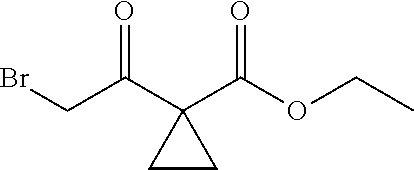
C00014

C00015
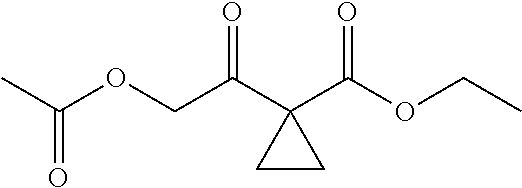
C00016
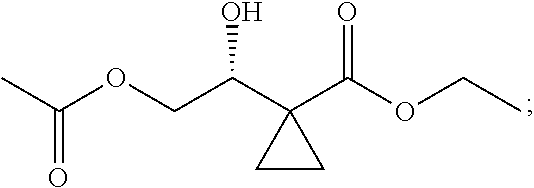
C00017

C00018

C00019

C00020
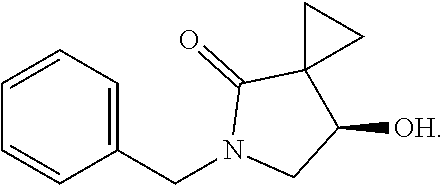
C00021
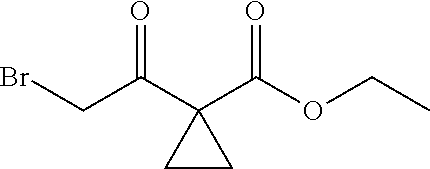
C00022
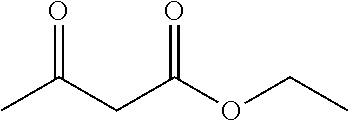
C00023

C00024
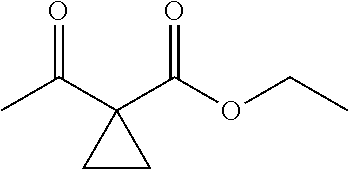
C00025

C00026
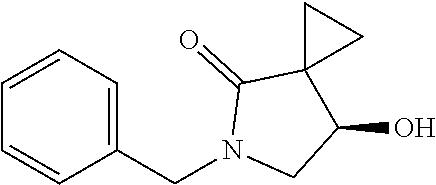
C00027
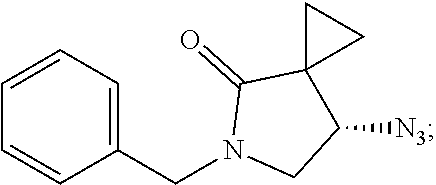
C00028
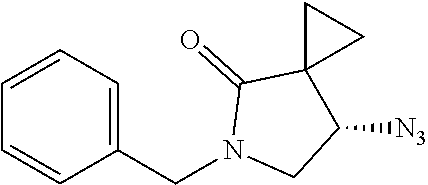
C00029

C00030

C00031

C00032

C00033
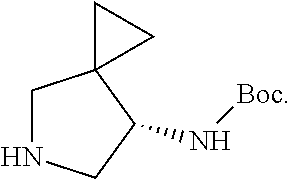
C00034

C00035

C00036

C00037

C00038

C00039

C00040
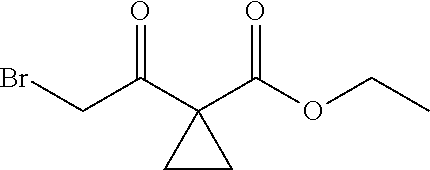
C00041

C00042
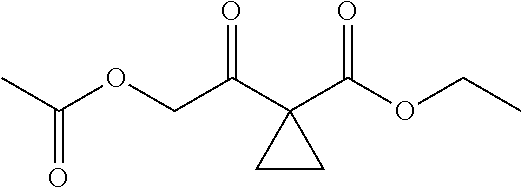
C00043

C00044
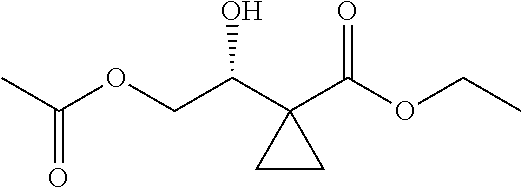
C00045
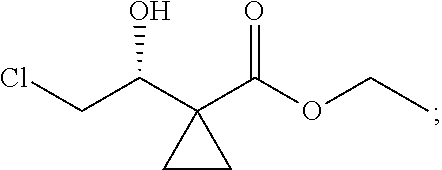
C00046
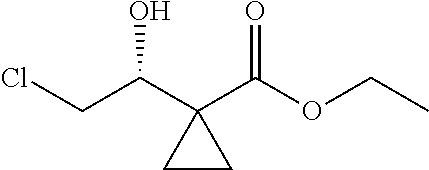
C00047
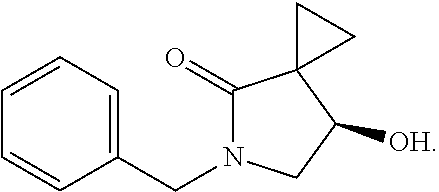
C00048
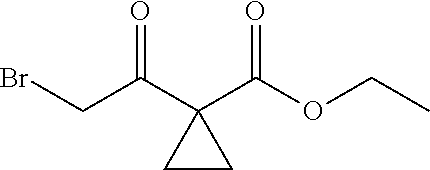
C00049
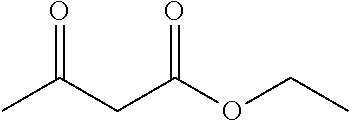
C00050
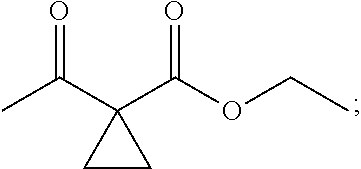
C00051

C00052
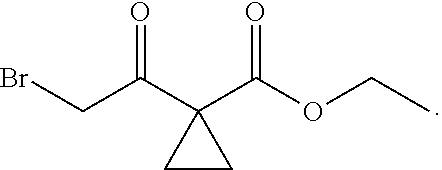
C00053
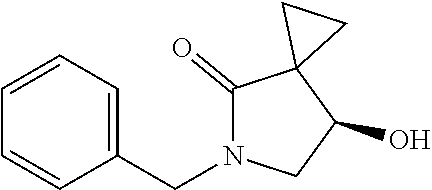
C00054

C00055

C00056
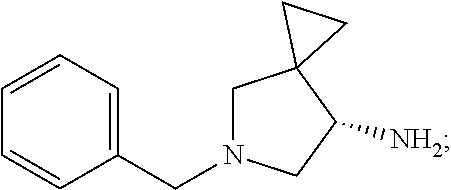
C00057
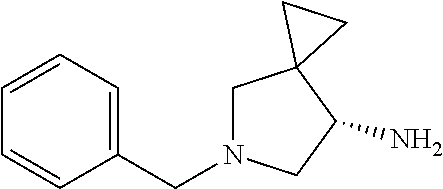
C00058

C00059
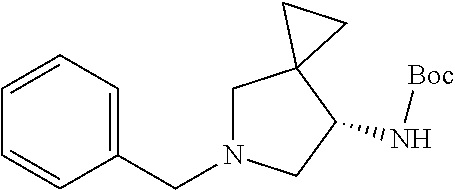
C00060

C00061
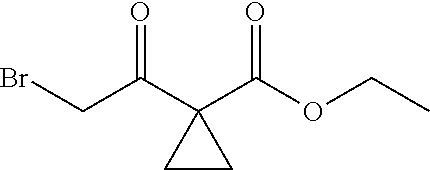
C00062

C00063
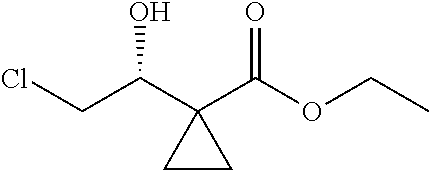
C00064
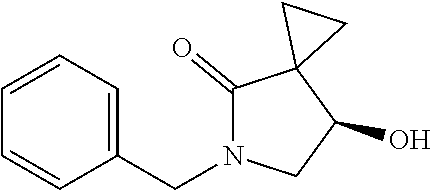
D00001

D00002

D00003

D00004
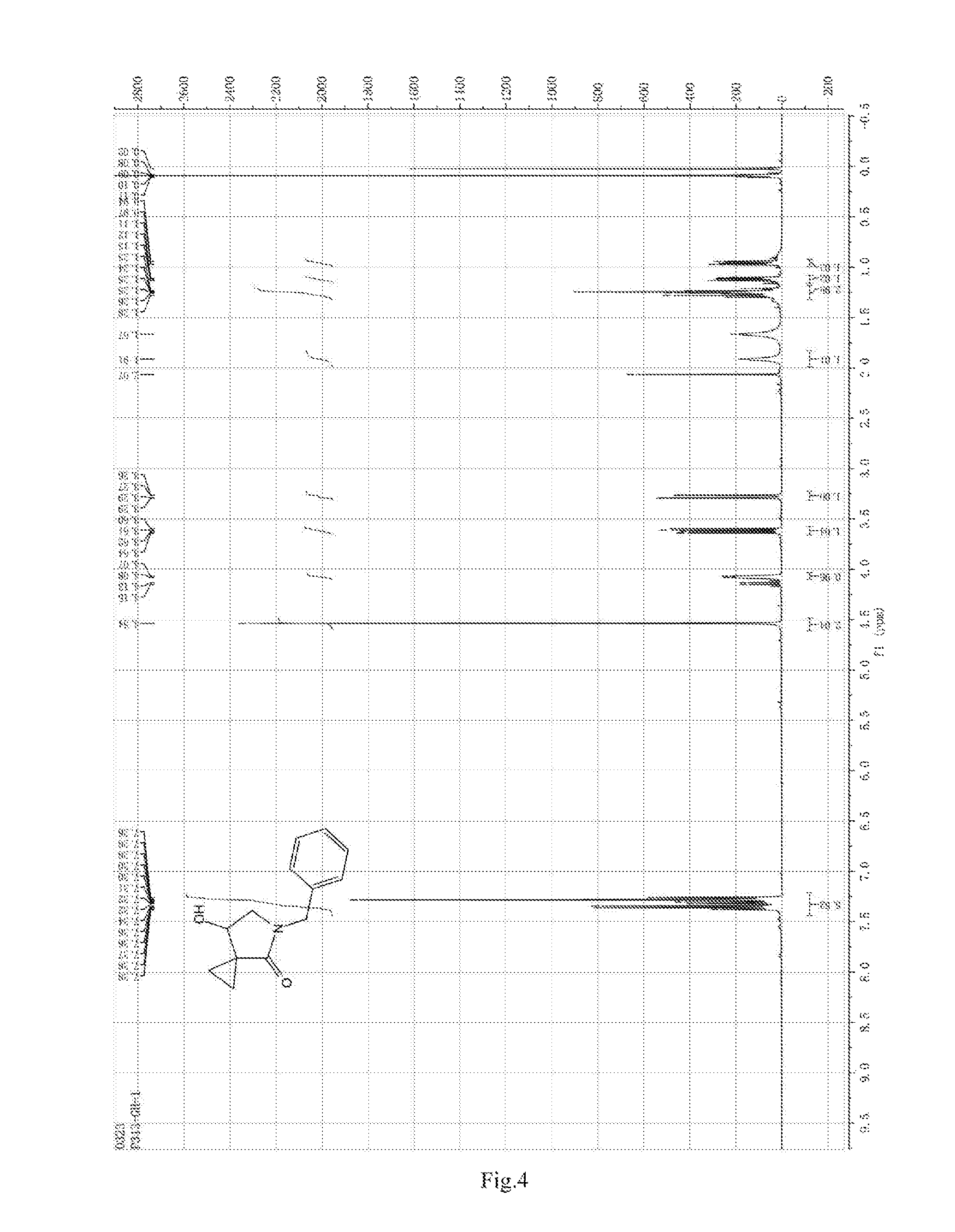
D00005

XML
uspto.report is an independent third-party trademark research tool that is not affiliated, endorsed, or sponsored by the United States Patent and Trademark Office (USPTO) or any other governmental organization. The information provided by uspto.report is based on publicly available data at the time of writing and is intended for informational purposes only.
While we strive to provide accurate and up-to-date information, we do not guarantee the accuracy, completeness, reliability, or suitability of the information displayed on this site. The use of this site is at your own risk. Any reliance you place on such information is therefore strictly at your own risk.
All official trademark data, including owner information, should be verified by visiting the official USPTO website at www.uspto.gov. This site is not intended to replace professional legal advice and should not be used as a substitute for consulting with a legal professional who is knowledgeable about trademark law.